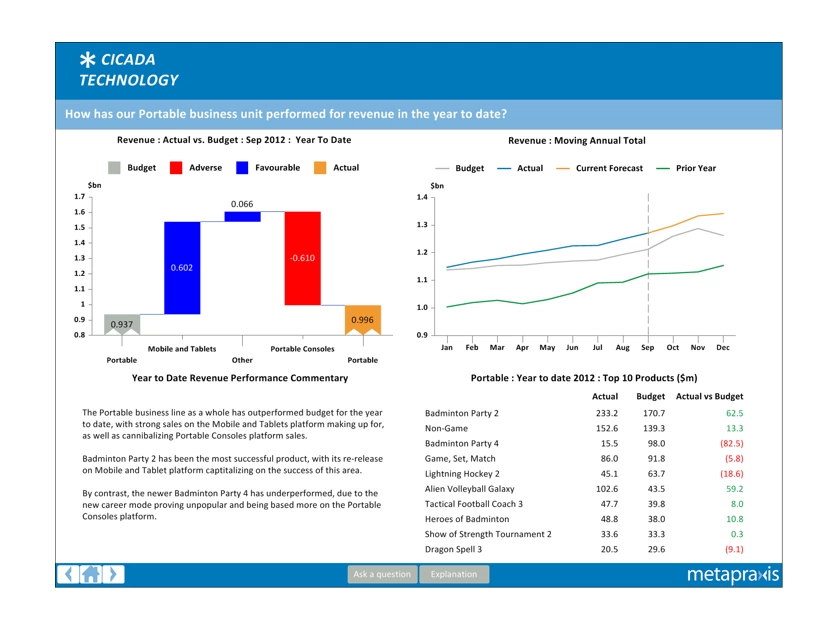FP&A
What makes a good Board Report?
We have created a set of key principles for companies looking to improve the relevance and usefulness of their Board Report

A company’s board of directors is collectively responsible for leading and directing its affairs in order to promote its success. To fulfill this role, the entire board must be well informed about current and likely future performance. This information is routinely communicated through the Board Report, which is typically a paper or electronic document circulated to directors before each board meeting.
The format and content of a company’s Board Report tends to follow the personal preferences of the CFO, CEO or Chairman. Requests for additional schedules and analyses from time to time often result in the report growing ever larger, frequently becoming an unwieldy and indigestible document that lacks a clear structure and focus on the future.
To answer the question “what makes a good board report?”, here at Metapraxis, we have created the following set of key principles for companies looking to improve the relevance and usefulness of their Board Reports.
1. Provide a clear structure
A Board Report needs a strong, logical structure that is easy to navigate so directors can rapidly find their way around the information and discuss its implications effectively.
2. Get the right balance of metrics
The Board Report should include performance metrics that are most relevant to the achievement of the organisation’s success. Outcome measures of performance (typically financial) should be balanced with leading indicators, which are usually non-financial (e.g. market share, demand, sales pipeline, staff attrition).
3. Answer key questions
Each page in the Board Report should anticipate and answer a key question that directors should be asking as they probe and challenge the information reported.
4. Provide a clear analysis of the issues
The Board Report should clearly identify issues, risks and actions. Even the most financially literate Non Executive Director should not be expected to have to pore over the reported data in the limited time available before each board meeting to identify the salient points for discussion.
5. Get the right balance of tables, graphs and commentary
The design of the Board Report should be engaging, with tables, graphs and commentary arranged on the page or screen to tell a story.
6. Focus on the future
The Board Report should provide credible forward-looking information, focused on whether the firm is on track to meet its forecasts for the financial year and provide early identification of potential bad news or opportunities ahead.
7. Include a “topic of the month”
To avoid the Board Report becoming too long but enable the coverage of a broad range of subject matter during the year, include a “topic of the month” that changes focus each month. This might include an analysis of specific competitors, products or customer groups, or focus on particular change programmes.
8. Enable directors to explore the report interactively
No single fixed report can comprehensively answer every supplementary question that a director might raise. Technology can enable Board Reports to be accessed in an interactive, screen-based format via a PC or tablet.
Metapraxis has developed a proven methodology for the design and implementation of Board level information. Our Board and Management Reporting solution is tailored to the specific needs of each business that engages us.

Anouska Backshall
Head of Customer Insights
Joined the team in 2011 and is responsible for delivering the internal and external communications agenda, as well as providing design and composition of branded content across social media and the company’s digital presence.
FOLLOW US

